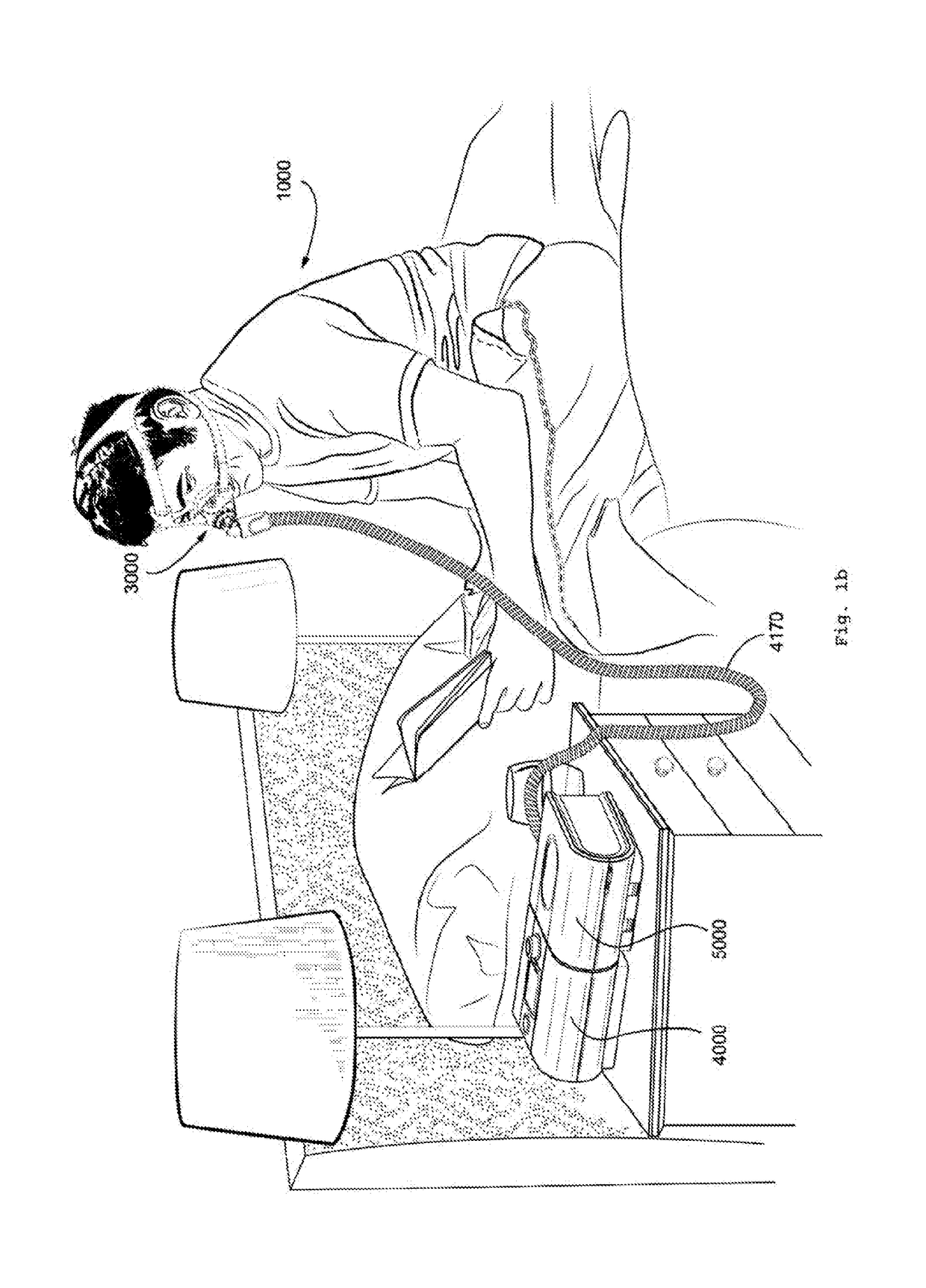It is possible that CSR is harmful because of the repetitive hypoxia.
Symptoms include dyspnea,
morning headache and excessive
daytime sleepiness.
Chest wall disorders are a group of thoracic deformities that result in inefficient
coupling between the respiratory muscles and the thoracic cage.
Treatment of OSA by nasal CPAP therapy may be voluntary, and hence patients may elect not to comply with therapy if they find devices used to provide such therapy one or more of uncomfortable, difficult to use, expensive or aesthetically unappealing.
For other forms of therapy, such as the delivery of
oxygen, the patient interface may not include a seal sufficient to facilitate delivery to the airways of a supply of gas at a
positive pressure of about 10 cmH2O.
The design of a patient interface presents a number of challenges.
As a consequence of these challenges, some masks suffer from being one or more of obtrusive, aesthetically undesirable, costly, poorly fitting, difficult to use, and uncomfortable especially when worn for long periods of time or when a patient is unfamiliar with a
system.
For example, masks designed solely for aviators,
mask designed as part of
personal protection equipment (e.g. filter masks), SCUBA masks, or for the administration of anaesthetics may be tolerable for their
original application, but nevertheless be undesirably uncomfortable to be worn for extended periods of time, e.g. several hours.
This discomfort may lead to a reduction
in patient compliance with therapy.
If a
mask is uncomfortable, or difficult to use a patient may not comply with therapy.
Since it is often recommended that a patient regularly wash their mask, if a mask is difficult to clean (e.g. difficult to assemble or disassemble), patients may not clean their mask and this may
impact on
patient compliance.
This approach has several flaws, such as latency and inability to identify the exact position of leakage.
As a result, this approach cannot provide explicit instructions to the patient regarding how to adjust the patient interface to stop leakage.
This approach also cannot automatically adjust the patient interface to stop the leakage without patient involvement.
As a result, when the patient is asleep, adjustment to the patient interface cannot be performed.
A seal-forming portion that may be effective in one region of a patient's face may be inappropriate in another region, e.g. because of the different shape, structure, variability and sensitivity regions of the patient's face.
For example, a seal on swimming goggles that overlays a patient's
forehead may not be appropriate to use on a patient's
nose.
Like the previous style of seal forming portion, if the match between the face and the mask is not good, additional force may be required to effect a seal, or the mask may unintentionally leak.
Furthermore, if the shape of the seal-forming portion does not match that of the patient, it may crease or buckle in use, giving rise to unintentional leaks.
Another type of seal-forming portion may comprise a friction-fit element, e.g. for
insertion into a naris, however some patients find these uncomfortable.
Some patients may find it inconvenient to constantly apply and remove an
adhesive to their face.
However these may be uncomfortable for some.
Many such harnesses suffer from being one or more of ill-fitting, bulky, uncomfortable and awkward to use.
Many such vents are noisy.
Others may block in use and provide insufficient
washout.
However, air pressure generators for medical applications have particular requirements not fulfilled by more generalised air pressure generators, such as the reliability, size and weight requirements of medical devices.
In addition, even devices designed for
medical treatment may suffer from shortcomings, including one or more of comfort,
noise, ease of use,
efficacy, size, weight, manufacturability, cost, and reliability.
An example of the special requirements of certain RPT devices is acoustic
noise.
Delivery of a flow of air without humidification may cause
drying of airways.
A range of artificial humidification devices and systems are known, however they may not fulfil the specialised requirements of a medical humidifier.
Room-based systems (e.g. a sauna, an air conditioner, an
evaporative cooler), for example, may also humidify air that is breathed in by the patient, however they would also humidify and / or heat the entire room, which may cause discomfort to the occupants.
Some medical
humidifiers may provide inadequate humidification, some are difficult or inconvenient to use by patients.
 Login to View More
Login to View More  Login to View More
Login to View More 


